Outdoor Photographer
My quick guide to photographing butterflies was recently published in the April 2019 edition of Outdoor Photographer. Click on the image below to view it as a PDF.
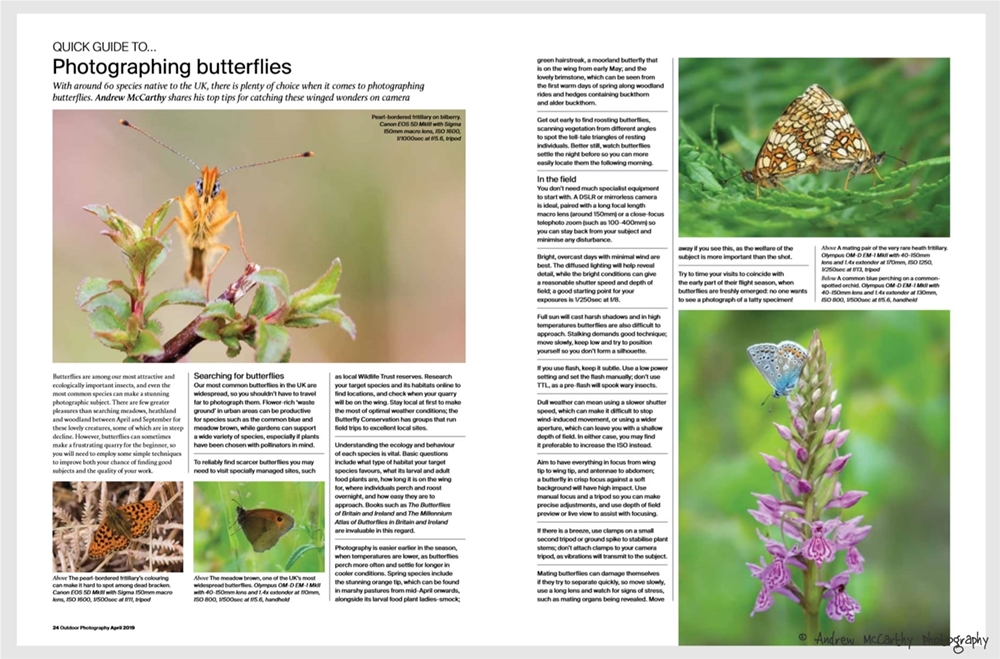
Outdoor Photographer Read More »
My quick guide to photographing butterflies was recently published in the April 2019 edition of Outdoor Photographer. Click on the image below to view it as a PDF.

Outdoor Photographer Read More »
I was delighted to learn today that one of my macro images (a great green bush cricket) has been included as the June image in the 2019 Mineral Products Association ‘Quarries and Nature’ calendar. This is my third successful entry to this competition in four years, and was quite unexpected!
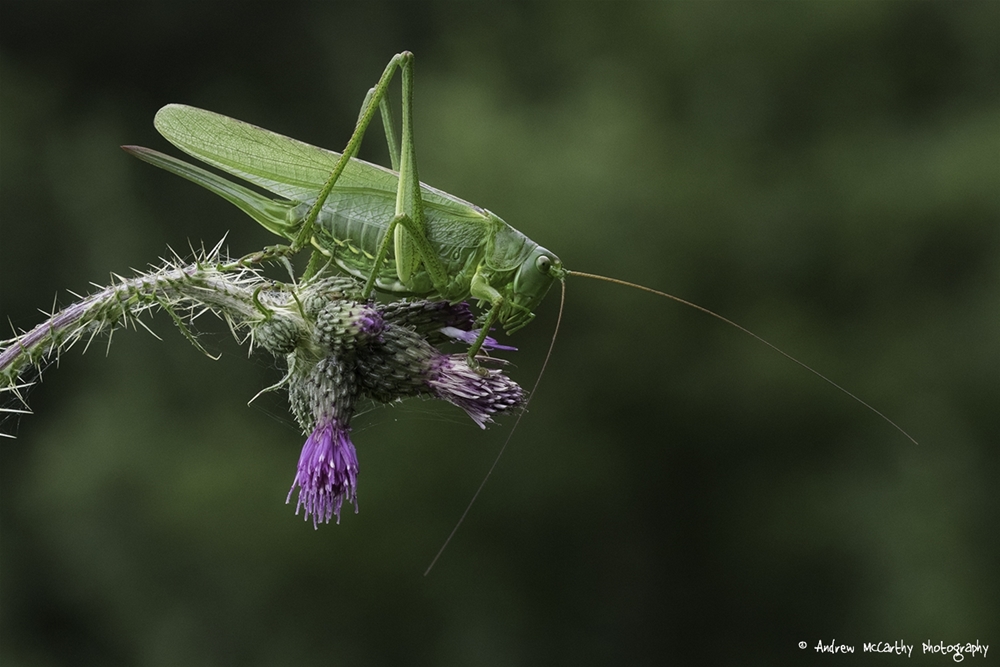
Mineral Products Association Calendar 2019 Read More »
I am delighted to have won the ‘Hidden Britain’ category in the 2018 British Wildlife Photography Awards with this stacked image of a nursery web spider. This, plus a couple of other images (which ill post seperately) made it into the 2018 BWPA book, which is availible online at https://www.bwpawards.org/competition/book. The winners were formally announced in early November and the awards were held on Tuesday 7th November at The Mall Galleries near Trafalgar Square. there was some great work on display and some inspiring photographers to share the stand with. All in all a great night!
https://www.bwpawards.org/winners2018


British Wildlife Photography Awards – Category Winner Read More »
Confused about where to begin with extreme macro stacking?
I know from personal experience that It can be really hard to know where to begin with ‘extreme macro’ photography (i.e. working at greater magnifications than life size) as the kit can appear very specialised and the process seems to require a whole set of new photographic skills and knowledge.
Getting to a starting point can be very time consuming and overall the subject is pretty daunting for the beginner. In actual fact, with patience and some basic kit (much of which can be purchased cheaply from eBay or sourced from around the house) some pleasing images can be obtained with only modest time and effort.
In terms of technical knowledge, there is of course a great deal of information on-line, but much of this is highly detailed and technical; even with dedicated websites it can be difficult for the wannabe extreme macro shooter to sort the ‘wheat from the chaff’. I thought therefore that it might be useful for beginners if I described the process I used when I started out shooting extreme close ups (manually) in order to obtain images such as that below of a worker honeybee loaded with pollen.
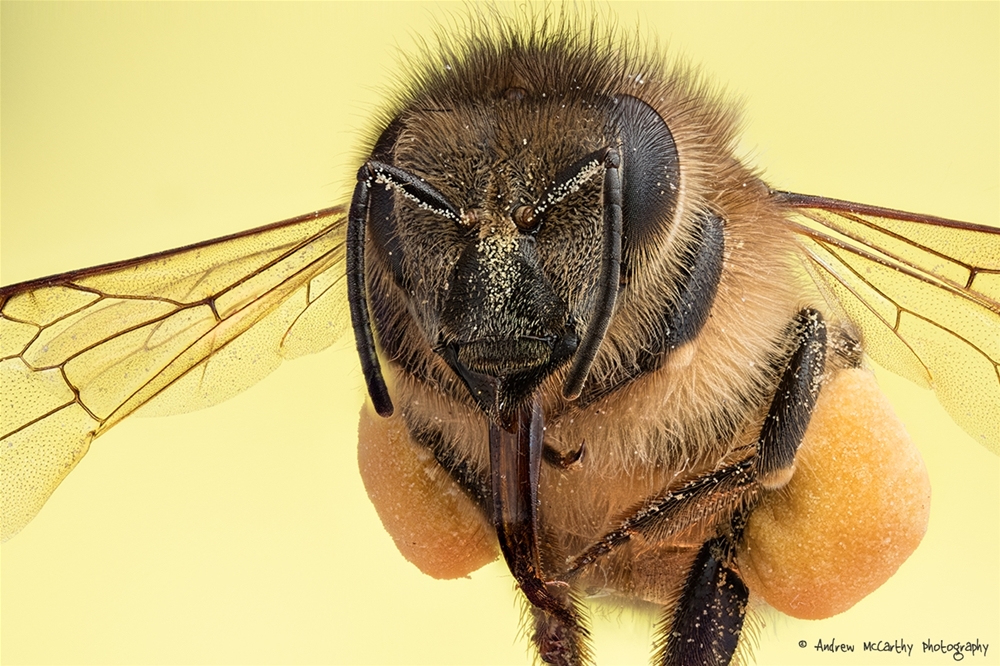
I am a Canon shooter, so some years back I invested in the unique Canon MP-E 65 lens which I now use for most of my ‘studio’ based extreme-macro photography. I use the lens purely for convenience – it say in my bag for quite a while before I decided to invest some time learning how to use it properly! It is not the best (or the only) lens for this type of work – there are many low-cost alternatives, including bellows, extension tubes (dead simple) or Raynox adaptors, that will give you perfectly acceptable results at greater than life size, and which are readily available.
I personally find the MP-E 65 extremely flexible however, as it is portable, light, simple (great for me!) and optically excellent – providing you understand the limitations involved with working at greater than 1:1 magnification (of which more in later posts) and at small apertures. The lens is is manual, so a twist of its external ‘focusing’ ring extends the magnification from 1:1 life size to x5 life size; a range which I find more than sufficient for shooting great close ups of many UK bugs.
Focusing the MP-E 65 is achieved by moving the lens forwards and backwards; this means you need a focusing rail of some kind for consistent results. If you are instead using a Raynox adaptor for example (which would allow retention of the cameras autofocus function, you would simply set your lens to AF and automate the stacking process using free software such as ‘Helicon Remote’. This allows you to tether your camera / lens combo to a PC for full off-camera remote control. Its pretty intuitive to use.
When I started experimentally stacking at higher magnification, my stacks were completely manual – I started off using an old Novoflex focusing rail which was purchased from eBay for around £20.00. This served me very well until I could justify purchase of an automated macro rail (of which more in future posts). In the following posts I’ll assume most beginners at this kind of photography will not want to spend a much money upfront, and I’ll describe my simple manual stacking process in the next post.
Thoughts on Extreme Macro Stacking – Starting Out Read More »
Just received notice that one of my grass snake images is the August image in the 2018 ‘Quarries and Nature’ calendar. Nice to have two successful entries in three years.
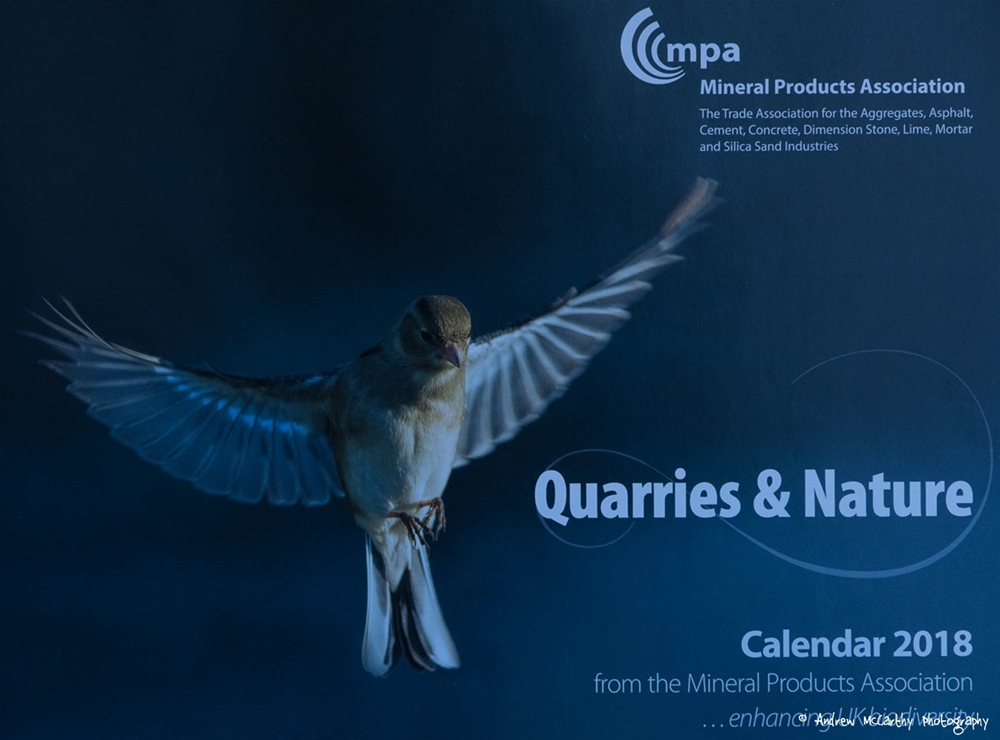

Mineral Products Association Calendar – Quarries & Nature 2018 Read More »
Really nice to have this image included in the 2016 Mineral Products Association annual calendar.
It’s a shot of two dew-covered azure damselflies perching on a marsh horsetail stem, taken at a former quarry in Devon with the Canon 5D Mk III and Sigma 150mm macro lens, Gitzo tripod and with a pop of fill using the MT-24 EX twin flash.
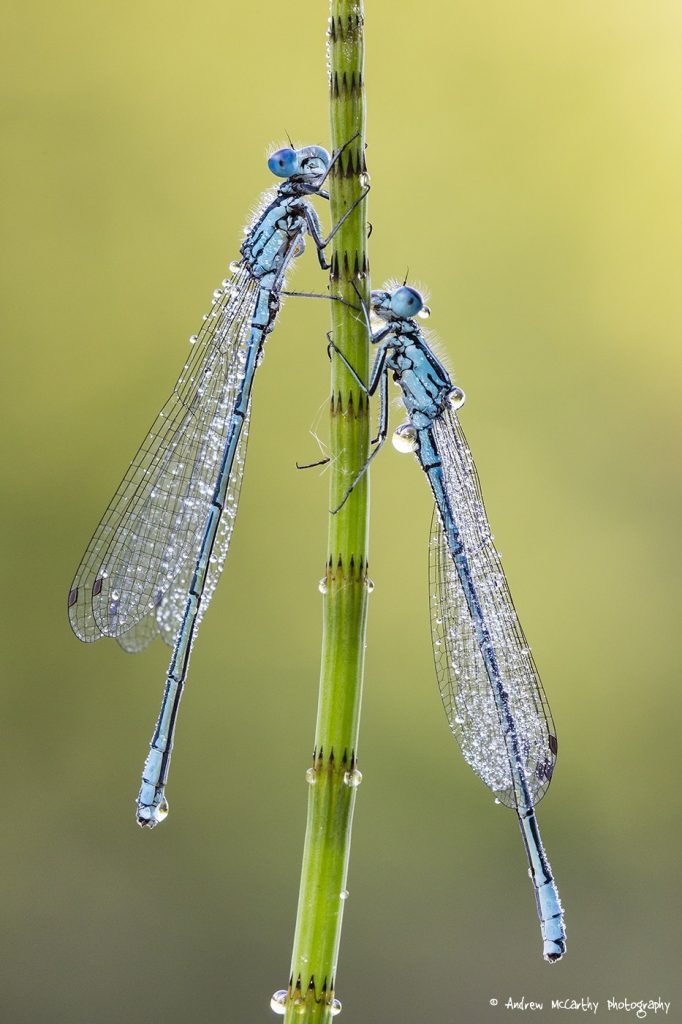
Mineral Products Association Calendar 2016 Read More »
I was very pleased recently to be asked to judge the inaugural 2015 Photographic Competition for the Chartered Institute of Ecology and Environmental Management (CIEEM).
The competition, which is sponsored by Wildcare, is being organised by the CIEEM’s West Midlands section and is open to all CIEEM members; it includes categories such as ‘habitats’, ‘ecology in action’, ‘plants in the wild’ and ‘wildlife’.
Closing date is Wednesday 1st July and the winner will be notified by Tuesday the 1st September 2015. A link can be found below:
Competition Judging – The 2015 CIEEM West Midlands Photo Competition Read More »
I am pleased to report that one of my pictures – of a harvest mouse perched in a Clematis seed head – has been chosen as ‘September’ in the 2015 BBC Countryfile Calander, which is produced annually in support of Children in Need. There were over 10,000 entries this year, so I was really chuffed to have been chosen as a finalist.
The image is admittedly a bit cheesy, but this is among my favorite pics of the past few years and I can see why it was chosen – it seems to fit the style of the calender nicely.
Earlier this year I received a copy of the 2015 Countryfile Calender signed by John Craven (!) together with a very smart framed picture with a plate saying BBC Countryfile finalist etc.
This is my second success with this prestigious calendar; in 2011 my picture of a pair of socialising grey seals was chosen as October’s supporting image.

BBC Countryfile Calendar Finalist 2014 Read More »
Check out my recent article in Devon Life June 2014 on foxes. It summarises the 6 weeks or so that I spent last year photographing a family of foxes near home here in Devon.
I have been keeping any eye out for the vixen again this year, and whilst she was seen quite a few times in April before she gave birth again, i have been unable to find her cubbing den this summer.

Devon Life Article On Foxes Read More »
I recenlty got back from an extended period on leave in Europe and thought I had better get up to date with some post-prod work. Here are a few shots of a wild male kestrel which were taken from Danny Green’s hide in Worcestershire.
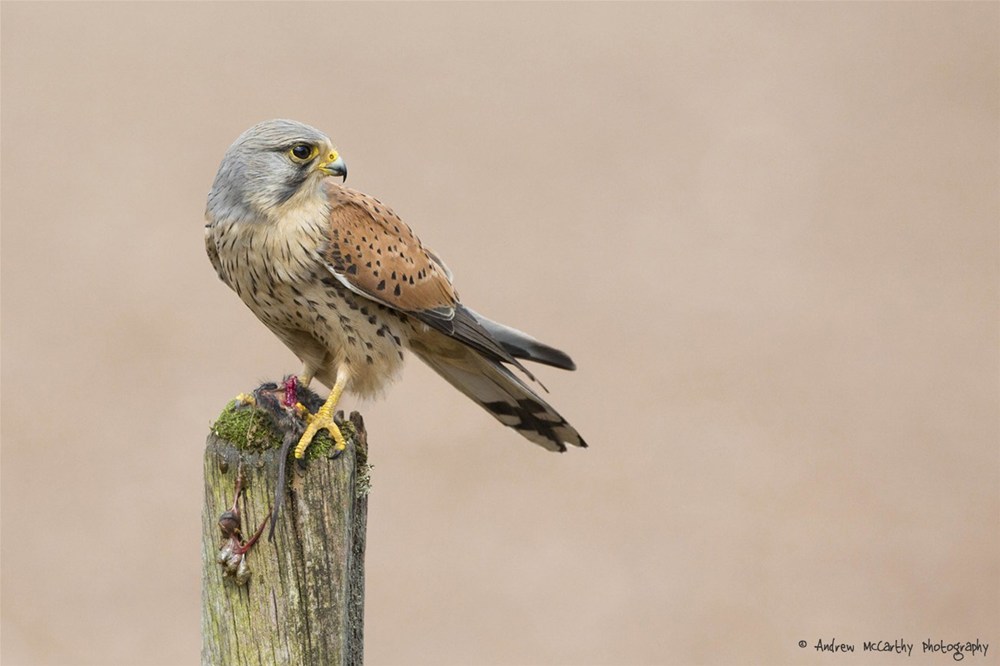
I very rarely these days take advantage of someone else’s hard work to ‘get the shot’, as I prefer to hone my skills in the field on my own, but in this instance it was worth it, as this timid raptor is really hard to get close to and shots like this (of a wild bird with vole prey) are hard to get.
Despite Danny and his colleagues hard work, though, good shots of this species are not guaranteed and it was an 8 hour wait for less than three minutes of action. The voles prey gave a touch of added authenticity I felt I had been patiently collecting cat kills over the previous few months, and put them to good use here!